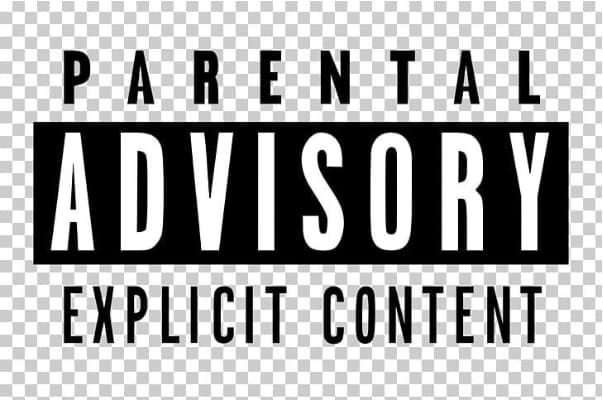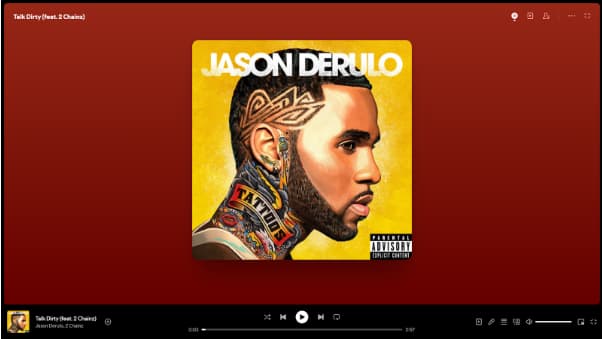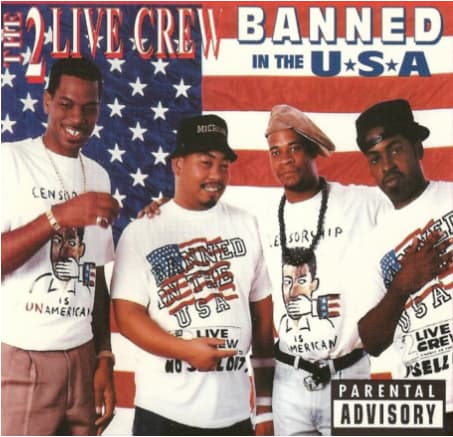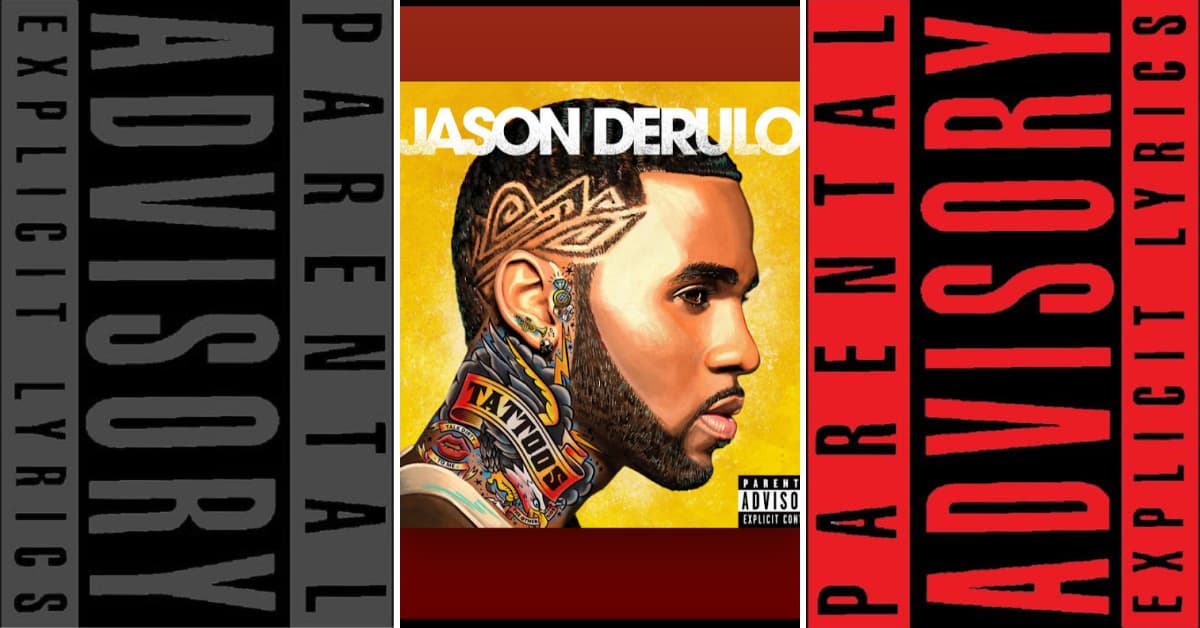The Parental Advisory Label transformed music culture by creating boundaries between mainstream and explicit content since 1985.
This black & white warning sticker emerged from political pressure but became a symbol of artistic freedom. Today, it influences streaming algorithms, marketing strategies, and consumer choices.
This article explores the label’s controversial origins, its current digital relevance, the practical application process, and its lasting impact on artists, parents, and the music industry’s approach to content regulation.
What Are Parental Advisory Labels?
Parental Advisory Labels are warning stickers placed on music releases containing explicit content like strong language, sexual themes, or violent descriptions that may be inappropriate for younger listeners.
Purpose of Parental Advisory Labels
The primary purpose is to inform parents and guardians about potentially unsuitable musical content, allowing them to make educated decisions about their children’s music consumption habits.

This remains an entirely voluntary industry self-regulation system, not a government-mandated requirement, allowing artists and labels to independently decide how to label their content appropriately.
How do Parental Advisory Labels Look?
The distinctive design features bold white text reading “Parental Advisory: Explicit Content” against a stark black rectangular background for maximum visibility.

Labels appear prominently on the bottom-right corners of physical album covers and within the metadata and storefront displays of digital music platforms for easy identification.
Who Had The First Parental Advisory Sticker?
The Parents Music Resource Center (PMRC), founded by Tipper Gore, targeted explicit lyrics after Gore discovered her daughter listening to Prince’s “Purple Rain.” The 1985 Senate hearings featured musicians like Frank Zappa and Dee Snider testifying against censorship.

Rather than accept government regulation, the Recording Industry Association of America (RIAA) created a voluntary labeling system, preserving artistic freedom through industry self-regulation. Many of the biggest music record labels supported this approach as it allowed them to maintain creative control while addressing public concerns.
What Do Parental Advisory Labels Do?
1. Alert parents to explicit content before purchasing music for their children or family listening environments.
2. Guide streaming platforms in content filtering, allowing users to block explicit tracks from playlists and recommendations automatically.
4. Inform retailers about age-appropriate sales policies, helping stores implement purchasing restrictions for younger customers when necessary.
5. Support artist expression by providing clear content boundaries, allowing musicians to create without censoring their artistic vision completely.
6. Enable consumer choice through transparent content warnings, letting listeners decide what aligns with their personal values and preferences.
Do Parental Advisory Labels Still Exist?
Parental Advisory Labels work till now. Today’s audiences are less shocked by explicit lyrics than during the 1980s moral panic, but labels remain vital for algorithmic curation and parental controls on platforms like Spotify.

The current broad categorization system treats single profanity identically to graphic violence, potentially inadequate for proportional content assessment. This particularly affects genres like hip-hop, where many of the top rappers in the world frequently use explicit content as part of their artistic expression.
Should Your Album Have A Parental Advisory Label?
Consider your target demographic, distribution strategy, and artistic goals when deciding whether explicit labeling serves your music career effectively. Understanding the benefits and drawbacks helps artists make informed labeling decisions for their releases.
Pros Of Getting A Parental Advisory Label
Having a Parental Advisory Label comes with the following benefits, which help artists and musicians to stay out of problematic situations
| Authentic expression | Artists maintain creative integrity without self-censoring |
| Target audience clarity | Explicit labels attract listeners seeking uncensored content |
| Platform compliance | Meets streaming service metadata requirements automatically |
| Marketing differentiation | Labels can signal edgy, rebellious artistic positioning |
| Legal protection | Provides content warning defense against complaints |
| Genre expectations | Hip-hop and metal fans often expect explicit content |
| Artistic credibility | Some audiences view labels as authenticity markers |
Emerging genres like hyperpop also frequently incorporate explicit themes and language as part of their experimental sound.
Cons Of Getting Parental Advisory Label
Getting a Parental Advisory Label has few drawbacks, which are listed as follows
| Limited radio play | Many stations avoid explicit content during the daytime |
| Streaming restrictions | Platforms may limit explicit track recommendations |
| Family audience loss | Parents might avoid purchasing labeled albums |
| Retail limitations | Some stores restrict explicit content sales |
| Age verification | Digital platforms may require age confirmation |
| Clean version necessity | Labels often require creating separate censored versions |
| Marketing complications | Advertising networks may reject explicit content promotion |
The decision often depends on whether you’re releasing a full album or mixtape, as different formats may have varying distribution and marketing considerations.
How To Get A Parental Advisory Label?
Getting a Parental Advisory Label is straightforward through modern digital distribution channels and platforms.
- Evaluate your lyrics for explicit content thoroughly
- Contact your distributor about labeling options available
- Mark explicit content during the upload process metadata
- Submit album artwork with proper label placement
- Verify that the label appears across all streaming platforms
- Update existing releases if the content warrants labeling
- Create clean versions if targeting broader audiences
- Inform promotional partners about the explicit content status
Most digital distributors handle label application automatically when you mark content as explicit during the upload process, streamlining the entire labeling procedure efficiently.
Popular artists like those featured in Travis Scott’s catalog demonstrate how explicit content can coexist with mainstream success when properly labeled and marketed.
Note : Adding Parental Advisory Labels typically costs nothing through digital distribution services, with most platforms providing free explicit content marking options during upload processes.
Beyond Music: Parental Advisory in Other Media
Similar content rating systems exist across entertainment industries. Movies use MPAA ratings (G, PG, R), video games employ ESRB classifications (E, T, M), and television utilizes TV content ratings. These parallel systems demonstrate society’s broader approach to age-appropriate content guidance across all media formats.
Related Read:
Conclusion: Advisory Labels Remain Essential Despite Digital Evolution
The Parental Advisory Label fundamentally reshaped music culture by establishing clear boundaries between mainstream and explicit content.
While imperfect in categorization, they successfully balance artistic expression with parental awareness. Artists should embrace transparent labeling to build audience trust and platform compliance.
Ready to release your music? Consider whether your content needs advisory labeling before distribution.
FAQs
The first official labels appeared in 1985 following the RIAA’s implementation.
No specific age limit exists; labels simply warn of mature content.
Only if their lyrics contain explicit content warranting listener warnings.
Strong language, sexual content, violent references, or drug-related themes.
Unlike movies, music only uses explicit content warnings, not age ratings.

